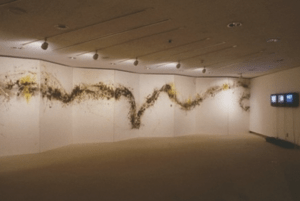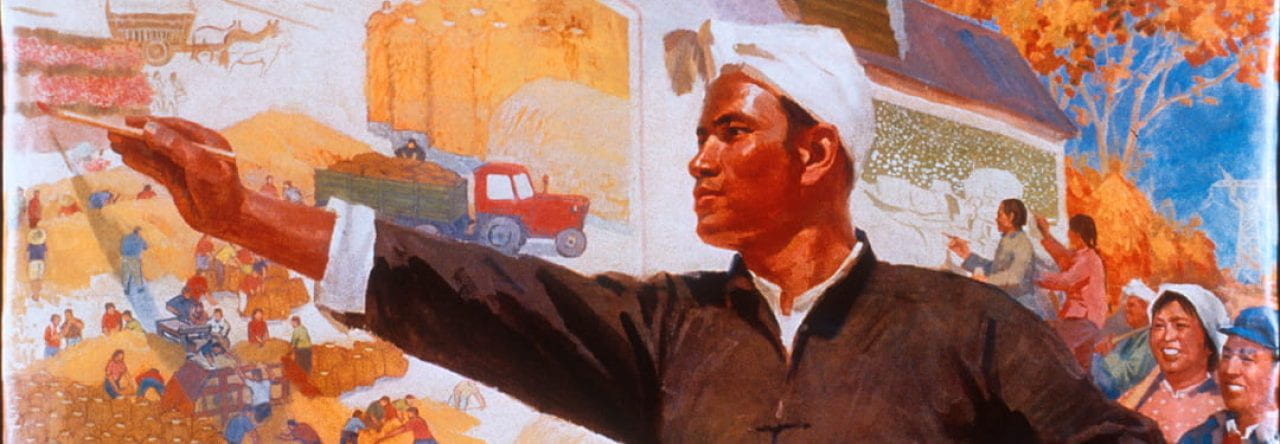Cai Guo-Qiang is a versatile artist who has created his own artistic movement which utilizes gunpowder and explosives. Whether it is an installation, a performance, or a drawing, Cai Guo-Qiang blends many different aspects of humanity and investigates the true purpose of humans within this world. Cai Guo-Qiang’s Extension, 1994, is a beautiful work of art that utilizes his gunpowder technique. Within this work, he utilizes the entirety of the gallery’s walls which extends throughout 8 different canvases— the work extends fifty feet and is about seven feet high. This gunpowder drawing has a yellow and brown tint and moves quite majestically within the different panels. As a Chinese artist, Cai Guo-Qiang creates this dynamic and abstract curvature to symbolize both the great wall of China and the famously known Chinese dragon. When thinking of the great wall of China and dragons, one thinks of length which is exhibited within the title of the work –extension. It is interesting to see Cai Guo-Qiang, create a simultaneous comparison between these two entities because both the Great Wall and dragons have a particular form that seems to be quite inconsistent –these two subjects appear to flow randomly. This particular work is somewhat of a nationalistic work of art because it connects Chinese cultural symbols, architecture, and resources all in one depiction. (Guggehim.org) Initially, when looking at this work of art it is hard to tell what medium is being used. Many may perceive this work of art as similar to Jackson Pollock who utilized splatter paint. In a way, Cai Guo-Qiang is modern-day Jackson Pollock because of his utilization of a new technique while focusing on the boundaries of abstraction. Cai Guo-Qiang, similar to Pollock, only has a certain amount of control over his medium; much of the final display comes down to the strategic placement of his own hand.
Extension, 1994, Gunpowder on paper, mounted on wood as an eight-panel screen, 256 x 1,560 cm

Bibliography:
“Gunpowder Drawings.” The Guggenheim Museums and Foundation, https://www.guggenheim.org/teaching-materials/cai-guo-qiang-i-want-to-believe/gunpowder-drawings.


Zhebin Yin
This is a really huge and beautiful piece of art. The size of the art makes it very impressive. Also, the representation and interpretation towards this art is very interesting where it “symbolize both the great wall of China and the famously known Chinese dragon.” This makes me rethink what would the size of the painting represent and influence the interpretation towards the intentions of the artist.
Joseph McDonagh
I think you did a great job of really trying to describe the installation in descriptive details allowing me to visualize the size of the work without actually seeing it. In addition the connections you draw to other artists is interesting as you attempt to relate their styles to each other.